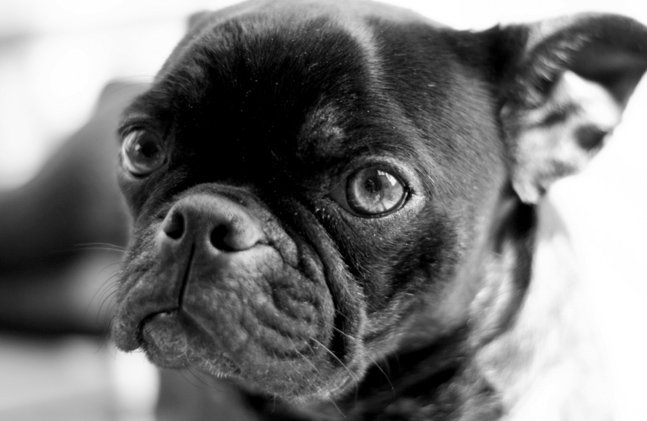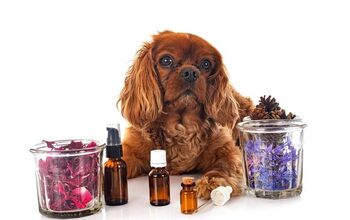Bugg


About Bugg
When you hear the name “Bugg,” what animal do your picture? Probably not a dog, right? Well, that’s an easy mistake to make. While you might not necessarily think about lovable little fuzzballs when you hear the word Bugg, trust us. They are out there. You just found them. They are designer dogs and while you don’t know it yet, you will fall in love with them.
What do you get when you cross a Pug and a Boston Terrier? A bundle of cuteness, that’s what! Even though its exact origins are unclear, the Bugg has seen a swift rise in popularity amongst designer dog breed enthusiasts. Quite rightly so, too!. These puppers are absolutely adorable and their playful and loving personalities make them an excellent dog for most first time dog owners. It’s hard to think of anyone who wouldn’t fall hard and fast for these delightful little guys. You, dear reader, are not an exception to this rule!
Although a hybrid’s appearance can sometimes be difficult to predict, breeders of Buggs aim for a physical appearance that is closer to that of the Pug. Buggs often have (but not always) drooping ears and curly tails. Their coats are straight and soft. There is no set look that can be expected from any Bugg puppy just yet. Unless you count cuteness of course. They are guaranteed to be cute. That’s a promise.
As for their personality, the adorable Pug and Boston Terrier mix is a perfect companion. They are sweet, very affectionate with their family and have an adorable clownish side to them. You can’t help but laugh at the silly antics of these little cuties. Their moderate activity needs and compact size even make them particularly appealing to people who live in apartment buildings and condos. So it’s not wonder why this designer dog breed has become so beloved in recent years.
Whether going by the name Bugg, Bug, or Pugin, this breed has stolen the heart of so many owners. You could be the next human to fall for these delightful doggos. So, to find out more about what these hybrids bring to the table, read on! You just might find yourself racing out to a Bugg breeder to claim one as your own by the time you finish this article.
The Bugg has seen a swift rise in popularity amongst designer dog breed enthusiasts; and quite rightly so.
There is no exact record of when or why the first Buggs were bred, but breeders by and large agree that they are a more recent creation in the designer dog arena. One possible motive for crossing Pugs and Boston Terriers may have been to create a very small lapdog that combines the best characteristics of both breeds. As with most designer gods, we can’t be sure. Unfortunately, no one kept any records of this sort of thing.
The Bugg is a designer dog whose parental breeds are the Pug and the Boston Terrier. In most cases, these cute dogs are an even 50-50 mix of the two purebreds, which is the healthiest type of hybrid. Some breeders, in an effort to create a more standardized look, will try to have multigenerational crosses of the Bugg. This is achieved by crossing Buggs with either other (non-related) Pugs or Boston Terriers. It all depends on the final goal of the breading. However, this can sometimes lead to exacerbation of genetic health issues, so you should be careful if you are buying a multigenerational Bugg hybrid. As always, it’s important to do your research before committing to a specific pup.
As a crossbreed dog, the Bugg is not recognized by the American Kennel Club. As a result, these designer puppies are not eligible for registration and won’t have official pedigree papers. Despite this, you should make sure to ask for a health guarantee as an assurance of any puppy’s good breeding. Puppy mills and shady backyard breeders won’t offer any of these guarantee, as they produce sick dogs. Choosing a reputable breeder is important because it means that you will get information about their parents (who will have papers as they are purebreds).
The Bugg does best on high-quality dry food for dogs. Like most other canines, these hybrids thrive on nutritionally complete kibble, but only if it is made to meet their own needs. In the case of the Boston Terrier and Pug mix dog, this is is usually a formulation for small dog breeds. These are suitable for small breed dogs with activity levels similar to those of the Bugg. In addition, their kibble must be age appropriate because puppies, adult dogs, and seniors all have different dietary needs.
Now, don’t let their small size fool you. Buggs are voracious eaters and will greedily stuff their faces with any food that you put in front of them. Therefore it is important to carefully monitor the amount of food that you feed your Bugg. Since they are dogs of small build, they are at high risk for obesity and will easily gain weight. Sadly, this excess weight could lead to a myriad of serious health issues, ranging from joint pain all the way to more illnesses such as diabetes. Stick to serving size recommendations by the manufacturer and don’t go overboard with treats. It’s also a good idea to split their daily dose of kibble into two separate meals to prevent bloating.
If you are ever concerned that you might not be meeting your Bugg’s dietary needs, always consult with your veterinarian. The guidelines provided by dog food manufacturers work for most puppers, but not all doggos are the same. Only your vet will be able to identify the specific needs of your personal pup. So if you are ever worried, ask that vet! That’s why you have one, after all.
Buggs are extremely intelligent and easy to train.
Buggs are extremely intelligent and easy to train. However, some can inherit a stubborn streak from their Boston Terrier parents and therefore require a patient owner that is committed to the training process. They generally respond very well to reward based training methods and a firm but loving hand. It’s important to always focus on on training rooted in positive reinforcement or rewards. Negative reinforcement or punishment is closer to abuse than training. It’s vital to avoid that at all costs as not only will you harm the dog, you’ll also rarely get the behaviour that you seek. Patience and positivity are your friends. Embrace them while you train and you’ll end up with the perfect pup.
The average weight of a hybrid breed is usually estimated as the average weight of its two parents. Buggs often weigh in at around 15 to 25 pounds.
Predicting a hybrid dog’s temperament can sometimes be a challenging task because their personalities can differ greatly based on the genetic contribution from each parent. However, a Bugg’s temperament is fairly easy to predict since Pugs and Boston Terriers share a similar temperament to each other. There’s not much variance that’s even possible in a Bugg. Just slight variations on a theme (the theme being an adorable little pupper).
Like Pugs, Buggs are extremely loving and devoted to their owners and love spending time cuddling up in their laps. They are also extremely playful and sometimes even comical. Buggs are highly affectionate towards children and love playing with them. This makes these pups perfect companions for families. Everyone will love these pups senseless and the cute little muffins with love you right back.
However, they can sometimes inherit the Boston Terrier’s territorial streak and this can become a problem when not corrected quickly. Lapdogs that are territorial over their owners might not seem like a significant threat but is a serious issue that any responsible dog owner should address. This is why training should began as early as possible when Buggs are puppies. You must establish an alpha status in the relationship or these little guys will turn into tiny titans within your household. No one needs that.
Like most hybrid dogs, Buggs can inherit health issues related to their parent breeds. Both the Pug and the Boston Terrier are brachycephalic dog breeds, which mean your Bugg could develop breathing problems. And because of their protruding eyes, take extra care to ensure debris doesn’t cause vision ailments. As always, you should schedule regular appointments with your vet so that any potential health issues can be caught and treated early.
Buggs have a life expectancy of 10 to 13 years.
Buggs are highly energetic and love to frolic and play around. Their daily exercise requirements can be easily met with a brisk walk or a short session of play. Tucker these little guys out every day and they’ll be happy to laze around in your lap. However, leave them alone for too long and they will find new and exciting ways to burn off energy in your home that your might not appreciate.
Buggs are extremely loving and devoted to their owners and love spending time cuddling up in their laps.
As with other designer dog breeds, the Bugg is not recognized by the American Kennel Club. The Bugg is recognized by the American Canine Hybrid Club, the Designer Dogs Kennel Club, the International Designer Canine Registry and the Designer Breed Registry.
Buggs have short, fine coats and come in shades of brown, black or white. Buggs are not heavy shedders and make good pets for dog owners with mild allergies. They should be brushed once a week.
Bugg puppies can be adorable as heck, but it is important that owners socialize them with humans and other animals early on in life. This can prevent any unwanted behavioral issues that could arise as the dog reaches adulthood.
Photo credit: ©iStock.com/RobertHornak; ©iStock.com/JonGorr ; ©iStock.com/carebott

Amy Tokic, Editor of PetGuide.com, is a passionate animal lover and proud pet parent of Oscar, a Shih Tzu/Chihuahua cross, and Zed, a Japanese Chin. Her love of animals began in kindergarten, when she brought her stuffed dog Snoopy into class with her every day. Now, she writes about her adventures in pet ownership and tirelessly researches products, news and health related issues she can share with other animal enthusiasts. In her free time, Amy loves perusing used book and record stores, obsessing over the latest pet products available and chasing squirrels with wild abandon (a habit attributed to spending too much time with her pooches).
More by Amy Tokic

























